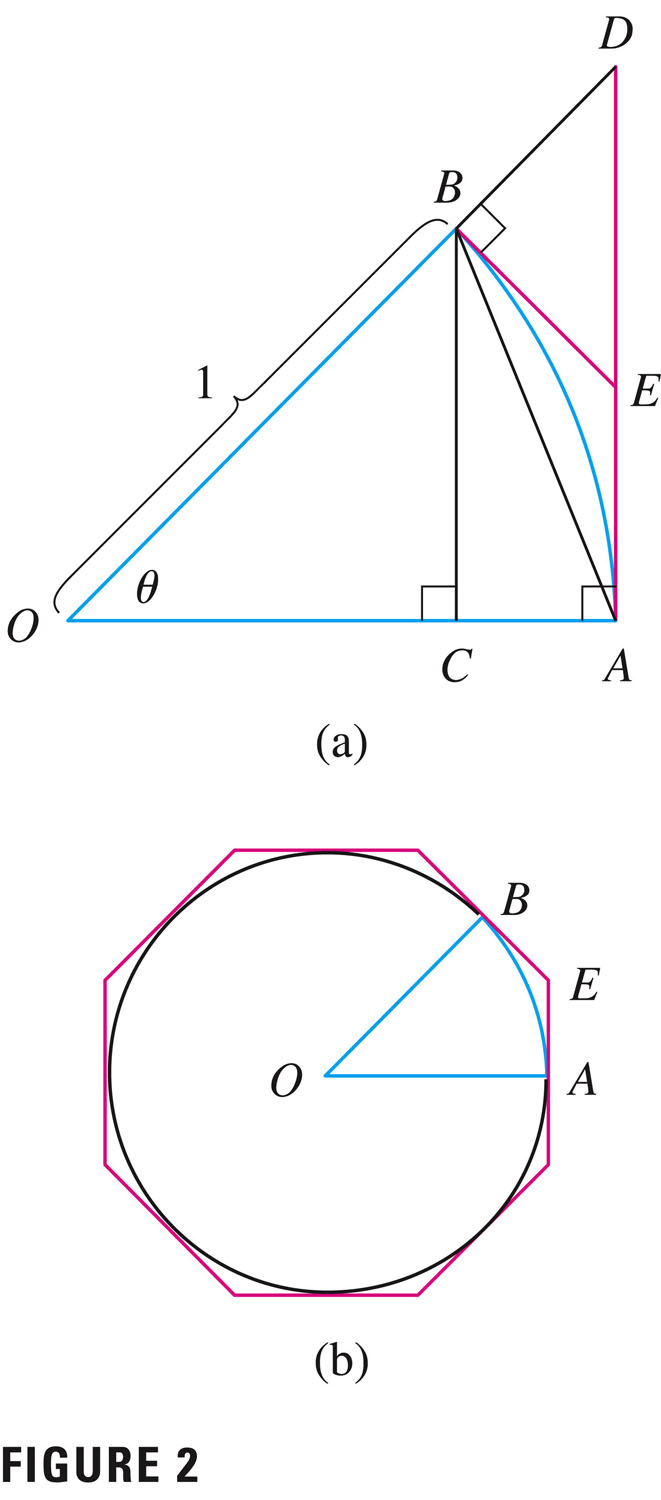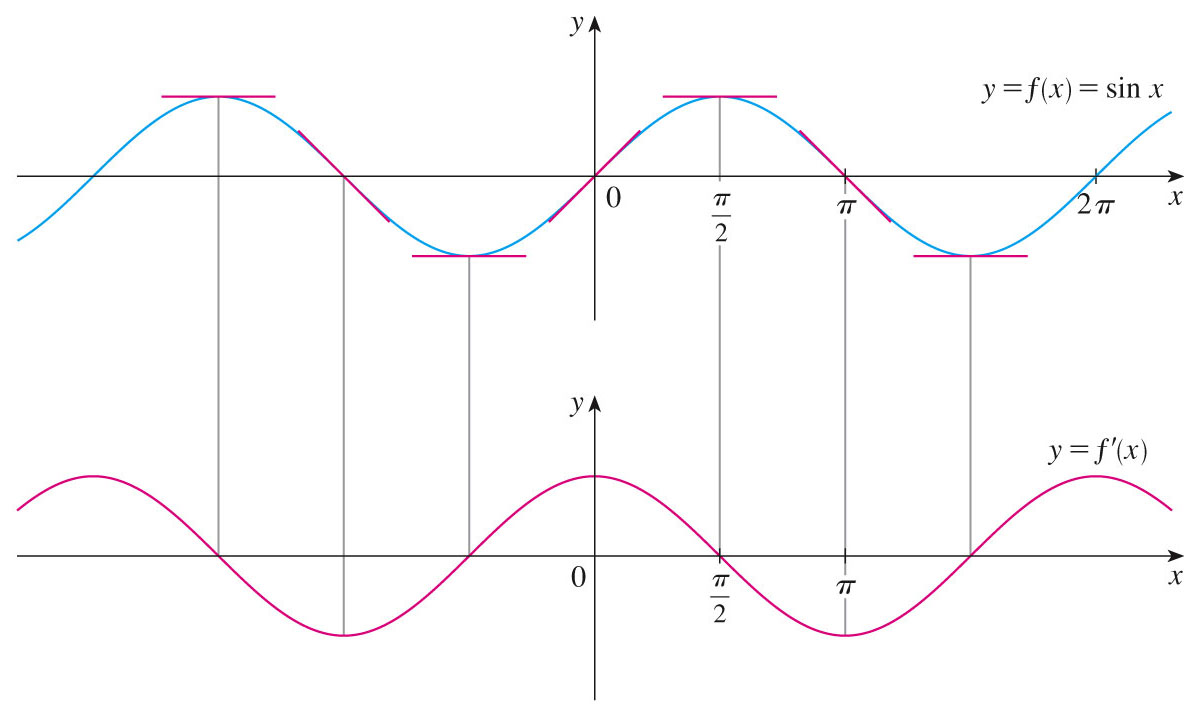- The derivatives of trig functions rely on some basic
understanding of the circle.
- Radian measure: $RADIANS=\frac{2\pi}{360}DEGREES$. In calculus, we almost always use radians.
- Length of a sector, related to angle $\theta$ subtending
and radius $r$:
Arc Length: $L = \theta r$

- Definitions of the trig functions, as functions of $x$, in radians (which is how we think about them in calculus):

We will derive the derivative of the sine function from the limit definition of the derivative (although we can see the derivative graphically above).
There are exactly three important trig identities one needs to know (all the others can be derived from these three):
- The Pythagorean theorem:
$\sin^2(x)+\cos^2(x)=1$ - The sine of a sum:
$\sin(a+b)=\sin(a)\cos(b)+\sin(b)\cos(a)$ - The cosine of a sum:
$\cos(a+b)=\cos(a)\cos(b)-\sin(a)\sin(b)$
So let's see how to derive the derivative of the sine from the MIDIC -- the limit definition of the derivative -- using the second of these identities.
Then the derivative of the cosine can be derived by simply shifting the sine function, and using the second trig identity above.
Let's see how that's done.....
- Examples:
- Derivative of tangent (use the quotient rule, of course!)
- Fourth derivatives of sine, cosine
- #7, p. 146
- #26
- #35
- #49
